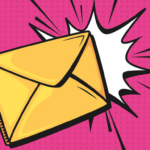This might come as a surprise: If you want to make email fundraising work, use the fundraising and direct response tools you already know.
Nearly every time I look at an online fundraising program that’s not pulling its weight, I see a program that doesn’t use the timeless fundraising tools and tactics that we know work offline.
No matter what channel you’re working in, good fundraising is good fundraising. It triggers an emotional response in your supporters. It empowers them, positioning them as someone who can help solve the problem. And it stirs them to action, to pull out their wallet and make a donation.
Let’s take a look at proven fundraising approaches and how they can apply to your email:
Urgency
This is the key to success in all fundraising. In fundraising, when a donor thinks “later,” it means never. You need to show your supporter that there’s a special opportunity — right now and only right now — to make an impact. That opportunity won’t last long.
Always have a reason that response should be immediate. A soon-arriving deadline is a big plus.
Specificity
Specific details about the situation you’re asking supporters to get involved with bring the story to life. Names, quotes, descriptions, dates, places … they all make it real for the supporter, not just bland, general messaging.
Specificity means saying more. That might seem wrong for emails, but it isn’t. Longer emails work well!
Problem-Solution-Action framework
Successful email fundraising is usually built on this proven framework:
- Engage the reader in a crisis or problem.
- Highlight the solution or opportunity to fix it.
- Call them to action with a button or link to click on.
It’s a proven approach for direct response and gives you a clear structure to follow in your copy.
Donor focus
To really activate donors, put them at the centre of the change we need, making them the change-maker. They’re not interested in funding your organisation to solve the problem. Donors want to directly solve it.
Donor focus also means engaging them on an emotional level. That’s what makes people take action. If you give people facts, they’ll engage with them intellectually, analysing and calculating those facts. But if you give people stories that connect emotionally and make them feel things, they’ll respond with action.
If you can achieve these qualities in your emails, you’ll see your supporter base respond with donations.
Theory of change
Another key to successful fundraising is its theory of change: the narrative explaining how the supporter giving right now is going to help solve the problem at hand. It should include specific, compelling detail on the actions and reactions that the supporter’s donation will kick off, that will end up solving the problem.
This change narrative should be simple enough for your audience to understand without too much effort. But should also include enough detail to be convincing.
A simple and strong theory of change narrative can be difficult for nonprofits that work on complex, long-term problems. But it’s an important step to building a sustainable source of donor income.
Layering
Some of your email audience might scan and make a quick decision to act. Others might need more detail before they make a decision. Emails need to work for both these types of people.
A good way to do this is to use layering.
I told you above about the problem-solution-action framework. Layering summarizes that framework in the first few sentences. Then it comes back for another cycle, this time adding richer detail before calling to action again, and then again and so on.
Each time through the cycle, there should be a clear, direct, visual and separated call to action and link on a new paragraph. The clear, direct and strong call to action helps convert your supporter’s emotional engagement to action.
This is how most effective direct mail is structured, and it works.
The newsletter difference
There’s one important way emails can profitably differ from the way it’s done in direct mail: Newsletters.
Print newsletters contain several stories and multiple calls to action. And they work.
But porting that into an email doesn’t work so well.
That’s why I recommend you stick to single-focus emails: Each send having just one story and one thing to do right now.
This might be a little uncomfortable for some nonprofits. But you really need to consider it.
Newsletters can take a lot of time to create. And they’re great at pleasing people internally at your nonprofit – you can publish lots of stories and give everyone a voice, but they have very low engagement.
That’s why I recommend single-focus emails as the backbone of your email program. If you want someone to respond to something or engage with a story, tell them about that and only that.
Want more up-to-the-moment help for digital fundraising? Take my all-new and completely FREE online workshop, 3 Email Fundraising Mistakes That Cost You Tons of Donations. This jam-packed session will help you leap forward in your online fundraising mastery. Sessions are coming up soon! More information here.
Related Blog Posts:











